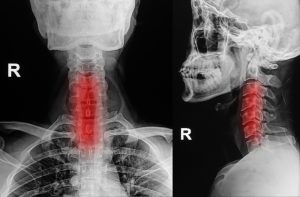 Spinal Stenosis can be defined as a narrowing of the bone channel occupied by the spinal nerves or the spinal cord. This article gives a good explanation of Spinal Stenosis and its symptoms, read more below to learn more about it.
Spinal Stenosis can be defined as a narrowing of the bone channel occupied by the spinal nerves or the spinal cord. This article gives a good explanation of Spinal Stenosis and its symptoms, read more below to learn more about it.
In the medical field, stenosis means the abnormal narrowing of a body channel. When combined with the word spinal, it defines a narrowing of the bone channel occupied by the spinal nerves or the spinal cord. Some people are born with a congenital form, but most develop spinal stenosis as part of the degenerative cascade. A few do not feel any effects of the narrowing, but as part of the aging process, most people will eventually notice radiating pain, weakness, and/or numbness secondary to the compression of the nerves or spinal cord. While the narrowing may occur at different parts of the spine, the symptoms of nerve compression are often similar. That is why specialists often will perform testing to determine the cause and location of the narrowing.
The lower back develops lumbar stenosis, while the neck develops cervical stenosis. In lumbar stenosis, the spinal nerve roots in the lower back become compressed and this can produce symptoms of sciatica—tingling, weakness or numbness that radiates from the low back and into the buttocks and legs—especially with activity. Lumbar spinal stenosis often mimics symptoms of vascular insufficiency. Both conditions can cause claudication, which means leg pain with walking. If vascular studies identify normal blood flow, and there is confirmation of spinal stenosis on diagnostic testing, the symptoms are then called neurogenic claudication. In the classic description, people with spinal stenosis will describe an onset of leg pain, or weakness with walking, but with relief of symptoms with sitting. Many will also describe increased tolerance to walking when flexed forward, such as when walking while leaning forward on a shopping cart.
While lumbar spinal stenosis most often occurs at the L4-L5 and L3-L4 levels, it can occur any level in the spine. The degenerative cascade may eventually effect most of the vertebral segments of the lumbar spine.
This article originally posted to Spine-health.com.







